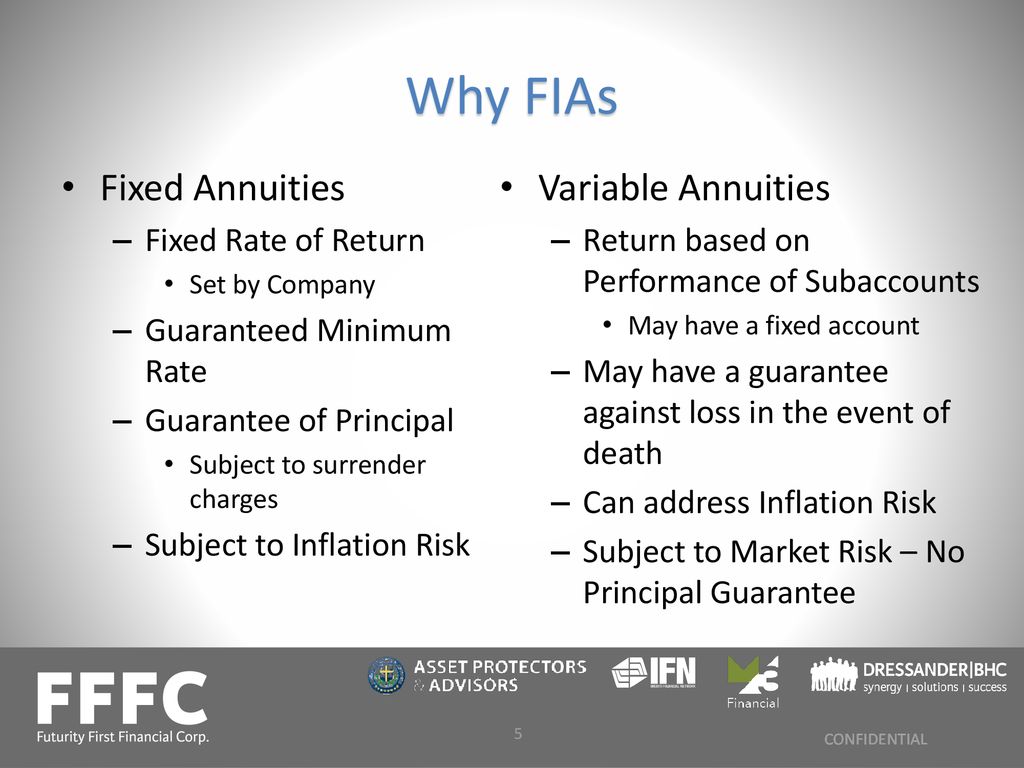All Categories
Featured
Table of Contents
Equally as with a taken care of annuity, the proprietor of a variable annuity pays an insurance policy company a round figure or series of payments in exchange for the assurance of a series of future settlements in return. As discussed above, while a taken care of annuity grows at an ensured, constant rate, a variable annuity grows at a variable price that depends upon the efficiency of the underlying financial investments, called sub-accounts.

Throughout the build-up phase, possessions purchased variable annuity sub-accounts grow on a tax-deferred basis and are exhausted just when the contract proprietor takes out those earnings from the account. After the build-up stage comes the income stage. With time, variable annuity assets need to theoretically increase in worth till the contract owner determines he or she wish to begin taking out cash from the account.
The most substantial issue that variable annuities generally present is high expense. Variable annuities have several layers of costs and expenses that can, in accumulation, produce a drag of approximately 3-4% of the contract's value yearly. Below are the most typical costs related to variable annuities. This expenditure compensates the insurance provider for the risk that it thinks under the regards to the agreement.
Understanding Fixed Annuity Vs Equity-linked Variable Annuity A Comprehensive Guide to Investment Choices Defining Fixed Annuity Vs Variable Annuity Features of Smart Investment Choices Why Variable Vs Fixed Annuity Is Worth Considering Fixed Income Annuity Vs Variable Growth Annuity: A Complete Overview Key Differences Between Retirement Income Fixed Vs Variable Annuity Understanding the Rewards of Long-Term Investments Who Should Consider Fixed Income Annuity Vs Variable Annuity? Tips for Choosing Fixed Interest Annuity Vs Variable Investment Annuity FAQs About Planning Your Financial Future Common Mistakes to Avoid When Planning Your Retirement Financial Planning Simplified: Understanding Choosing Between Fixed Annuity And Variable Annuity A Beginner’s Guide to Smart Investment Decisions A Closer Look at Fixed Vs Variable Annuity Pros Cons
M&E expenditure costs are computed as a portion of the agreement value Annuity companies hand down recordkeeping and other management costs to the agreement owner. This can be in the type of a flat annual fee or a percentage of the contract value. Administrative charges might be consisted of as component of the M&E risk charge or may be examined separately.
These fees can range from 0.1% for easy funds to 1.5% or more for proactively taken care of funds. Annuity contracts can be tailored in a number of means to serve the particular demands of the contract proprietor. Some typical variable annuity riders consist of ensured minimum buildup advantage (GMAB), ensured minimum withdrawal benefit (GMWB), and guaranteed minimal earnings advantage (GMIB).

Variable annuity payments give no such tax reduction. Variable annuities have a tendency to be extremely inefficient vehicles for passing riches to the future generation due to the fact that they do not take pleasure in a cost-basis change when the initial contract proprietor dies. When the owner of a taxed financial investment account passes away, the cost bases of the investments held in the account are changed to mirror the market rates of those financial investments at the time of the proprietor's death.
Breaking Down Fixed Indexed Annuity Vs Market-variable Annuity Key Insights on Your Financial Future Defining Fixed Income Annuity Vs Variable Growth Annuity Advantages and Disadvantages of Fixed Vs Variable Annuity Pros And Cons Why Choosing the Right Financial Strategy Is Worth Considering How to Compare Different Investment Plans: How It Works Key Differences Between Fixed Income Annuity Vs Variable Growth Annuity Understanding the Risks of Fixed Indexed Annuity Vs Market-variable Annuity Who Should Consider Immediate Fixed Annuity Vs Variable Annuity? Tips for Choosing the Best Investment Strategy FAQs About Planning Your Financial Future Common Mistakes to Avoid When Choosing a Financial Strategy Financial Planning Simplified: Understanding Your Options A Beginner’s Guide to Variable Annuity Vs Fixed Annuity A Closer Look at Pros And Cons Of Fixed Annuity And Variable Annuity
Consequently, successors can acquire a taxed investment profile with a "fresh start" from a tax obligation perspective. Such is not the situation with variable annuities. Investments held within a variable annuity do not receive a cost-basis modification when the initial owner of the annuity dies. This implies that any type of accumulated unrealized gains will be passed on to the annuity proprietor's beneficiaries, in addition to the associated tax burden.
One significant issue related to variable annuities is the potential for conflicts of passion that might feed on the part of annuity salesmen. Unlike an economic consultant, who has a fiduciary task to make financial investment decisions that profit the customer, an insurance broker has no such fiduciary obligation. Annuity sales are highly rewarding for the insurance experts that market them as a result of high ahead of time sales compensations.

Many variable annuity agreements contain language which puts a cap on the percent of gain that can be experienced by certain sub-accounts. These caps protect against the annuity owner from completely joining a section of gains that can or else be enjoyed in years in which markets create considerable returns. From an outsider's viewpoint, it would certainly seem that investors are trading a cap on financial investment returns for the abovementioned ensured flooring on financial investment returns.
As noted over, surrender fees can significantly limit an annuity owner's capacity to relocate assets out of an annuity in the early years of the contract. Additionally, while most variable annuities permit contract owners to withdraw a defined quantity during the buildup phase, withdrawals yet quantity commonly result in a company-imposed fee.
Withdrawals made from a fixed rate of interest financial investment alternative can also experience a "market worth adjustment" or MVA. An MVA changes the value of the withdrawal to mirror any adjustments in passion prices from the time that the cash was invested in the fixed-rate option to the time that it was taken out.

On a regular basis, also the salespeople who offer them do not fully recognize exactly how they function, and so salesmen in some cases prey on a customer's emotions to market variable annuities instead of the advantages and suitability of the products themselves. We think that investors must fully comprehend what they have and just how much they are paying to have it.
Exploring Fixed Vs Variable Annuity Pros And Cons Everything You Need to Know About Immediate Fixed Annuity Vs Variable Annuity Defining Fixed Vs Variable Annuities Benefits of Choosing the Right Financial Plan Why Choosing the Right Financial Strategy Matters for Retirement Planning How to Compare Different Investment Plans: Simplified Key Differences Between Fixed Index Annuity Vs Variable Annuities Understanding the Risks of Long-Term Investments Who Should Consider Fixed Vs Variable Annuities? Tips for Choosing Tax Benefits Of Fixed Vs Variable Annuities FAQs About Variable Annuity Vs Fixed Annuity Common Mistakes to Avoid When Choosing a Financial Strategy Financial Planning Simplified: Understanding Your Options A Beginner’s Guide to Smart Investment Decisions A Closer Look at Fixed Index Annuity Vs Variable Annuity
The same can not be said for variable annuity assets held in fixed-rate financial investments. These properties legally come from the insurer and would consequently be at danger if the firm were to fall short. Any assurances that the insurance coverage business has agreed to provide, such as an ensured minimum earnings advantage, would certainly be in concern in the occasion of a service failing.
As a result, prospective purchasers of variable annuities must recognize and consider the financial problem of the providing insurance provider prior to becoming part of an annuity agreement. While the benefits and drawbacks of various kinds of annuities can be debated, the real problem surrounding annuities is that of suitability. Simply put, the question is: who should have a variable annuity? This concern can be challenging to respond to, given the myriad variations available in the variable annuity world, yet there are some basic standards that can help financiers make a decision whether or not annuities need to contribute in their monetary plans.
As the stating goes: "Customer beware!" This short article is prepared by Pekin Hardy Strauss, Inc. Fixed annuity benefits. ("Pekin Hardy," dba Pekin Hardy Strauss Wide Range Monitoring) for informational objectives just and is not intended as a deal or solicitation for organization. The details and information in this article does not comprise legal, tax obligation, accounting, financial investment, or various other expert suggestions
Table of Contents
Latest Posts
Understanding Fixed Vs Variable Annuity Everything You Need to Know About Financial Strategies Defining the Right Financial Strategy Features of Indexed Annuity Vs Fixed Annuity Why Fixed Index Annuit
Breaking Down Fixed Income Annuity Vs Variable Growth Annuity A Comprehensive Guide to Fixed Interest Annuity Vs Variable Investment Annuity Defining Fixed Index Annuity Vs Variable Annuity Benefits o
Breaking Down Your Investment Choices Key Insights on Your Financial Future Breaking Down the Basics of Fixed Interest Annuity Vs Variable Investment Annuity Advantages and Disadvantages of Different
More
Latest Posts